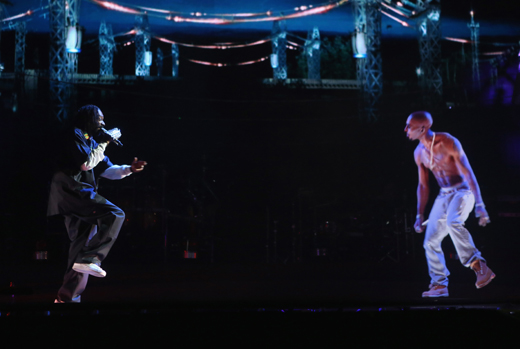Culture
In Case You Missed It: RagnaPac

Smushed between thousands of people and a Coachella stage, one person takes out their phone. With a tap on the tiny picture of a vintage camera, Instagram opens. Leveling the picture means adjusting to the tides of the crowd, but everything lines up for a perfect shot. The picture is checked for clarity, then has the “1977” filter applied. With another tap, the photographer shows the world what it would be like if holographic Tupac Shakur appeared in the late 70s, and our postmodern culture finds itself in a world post-RagnaPac.
Understanding the RagnaPac
To understand the RagnaPac, not to be confused with the 2paclypse, we must understand two truths about American pop culture. First, that the past 70-odd years of pop culture have become self-referential. Second, that technology can only grow into what the culture already expects. In the context of holographic Shakur being recorded via old-timey filters through Instagram, the RagnaPac occurred when futuristic technology was developed to serve pop-cultural nostalgia. Here’s a breakdown of the prophecy, which I think was on The Lost Tapes.
Let’s start with the hologram, because starting with anything else but the hologram would be lame. It’s a hologram, and holograms are the coolest piece of technology. Unlike most technology, holograms were built to dazzle. I’m sure more applications will come as the technology improves, but for now, it serves humanity to awe it. Star Wars technology has arrived, and of the Star Wars gadgets, holograms have to be the lamest. Google Glasses follow the same tradition of sci-fi movie technology crossing into reality, but it’s too practical and life-changing to be treated with the same wonderment as holograms. The announcement of Google Glasses was surprising, but not shocking. That’s the nature of today’s tech world. Something gets invented, causing an argument over whether or not it will save us or destroy us all, and then culture produces a cautionary tale about the culture inspired by the technological advances. Eventually some of those visions come true, and technology catches up to those visions to be greeted by the same “kill us/save us” brouhaha. No one will ever say “Holograms are destroying our nation.” The hologram only gives off a cool visual. Hell, even in Star Wars it existed as a glorified letter.
Yelling “The Future is Here!” when seeing a hologram is a sign of RagnaPac, but only when the hologram is of a dead or unattainable celebrity. It’s unsettling, but undeniably an event. The return of any pop culture institution is an event. We love returning to things, even if we don’t gain knowledge by looking back. People yearn to return to the 90s, now. There was an eerie comfort found in seeing Tupac grab his ghostly junk. And this ghostly comeback isn’t seen by holographic rap stars alone. Just a week prior, Titanic 3D and American Reunion waved their junk in our faces, reappearing from the 90s in order to claim whatever relevance they still can. The rerelease and the sequel exist to let people relive a certain place and year, betting the past is usually happier than the present. Despite adding an extra dimension or Eugene Levy reprising the role of Jim’s Dad, the films will never transcend what they were in the 90s. They don’t aspire to. They exist now as holograms; their only hope is that an audience will keep them relevant.
Fortunately for RagnaPac, we love the past. We are aware of the past’s power over the present and future, which is why I think Instagram took off the way it did. It’s not that we want to reminisce, but we want a mystery, a foggy past between us and the picture. I’m not going to lie, I was first to make fun of everyone suddenly having artsy filters applied to bullshit daily minutiae. However, I’ve come around to the importance of Instagram in a culture of sterile visuals. The filtered photos stumbled onto something eternal with our culture: We are inspired by the distant past, and we only wish that the past became distant sooner. An aged photo is the easiest way to feel more committed to the immediate surroundings, to feel inspired or humbled by the rapid rate of time. The instant that unwitting soul Instagrammed holographic Tupac, the futuristic had become the past, and it doesn’t matter if he looks like he’s in the 1970s. What matters is that there was a fucking awesome hologram. And it already happened.
RagnaPac isn’t a negative thing, but it must be an ending. Or a beginning. And maybe it is negative. I know that four different eras have been jammed together, almost creating a singularity of pop culture history. I know technology will find new and exciting ways to placate us. We’ll keep reusing and revisiting. I think RagnaPac proves that, in the future, there will be a virtual reality where the 90s never end. It won’t kill us, but it definitely won’t save us. Or maybe it’s a “saves you/kills me” scenario. I’ll leave a hologram.